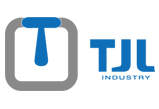- Home
- >
- Technology
- >
- Common valve installation knowledge II
Common valve installation knowledge II
Installation of common valves
Installation of gate valve
Gate valve, also known as gate plate valve, is a valve that uses the gate to control the opening and closing of the valve. It can adjust the pipeline flow and open and close the pipeline by changing the cross section. Gate valves are mostly used for pipelines that fully open or close the fluid medium. The installation of gate valve generally has no directional requirements, but it cannot be upside down.
Installation of stop valve
Stop valve is a valve that uses valve disc to control opening and closing. Adjust the medium flow or cut off the medium path by changing the gap between the valve disc and the valve seat, that is, changing the size of the channel section. Pay attention to the flow direction of the fluid when installing the stop valve.
The principle that must be observed in the installation of stop valve is that the fluid in the pipeline passes through the valve hole from bottom to top, commonly known as "low in and high out", and reverse installation is not allowed.
Installation of check valve
Check valve, also known as check valve and one-way valve, is a valve that opens and closes automatically under the action of the pressure difference between the front and rear of the valve. Its function is to make the medium flow in only one direction and prevent the medium from flowing back in the opposite direction. According to their different structures, check valves include lifting type, swing type and butterfly wafer type. Lift check valve can be divided into horizontal and vertical. When installing the check valve, pay attention to the flow direction of the medium and do not install it reversely.
Installation of pressure reducing valve
The pressure reducing valve is a valve that reduces the inlet pressure to a required outlet pressure through regulation, and automatically keeps the outlet pressure stable by relying on the energy of the medium itself.
From the perspective of hydrodynamics, the pressure reducing valve is a throttling element whose local resistance can be changed, that is, by changing the throttling area, the flow rate and kinetic energy of the fluid can be changed, resulting in different pressure losses, so as to achieve the purpose of pressure reduction. Then, depending on the regulation of the control and regulation system, the fluctuation of the pressure behind the valve is balanced with the spring force, so that the pressure behind the valve remains constant within a certain error range.
Installation of pressure reducing valve
1. The pressure reducing valve group installed vertically is generally set at a suitable height from the ground along the wall; The pressure reducing valve group installed horizontally is generally installed on the permanent operating platform.
2. The profile steel shall be loaded into the wall outside the two control valves (commonly used for stop valves) to form a bracket, and the bypass pipe shall also be stuck on the bracket for leveling and alignment.
3. The pressure reducing valve shall be installed vertically on the horizontal pipeline without inclination. The arrow on the valve body shall point to the medium flow direction and shall not be installed reversely.
4. Stop valves and high and low pressure gauges shall be installed on both sides to observe the pressure changes before and after the valve. The pipe diameter behind the pressure reducing valve shall be larger than the inlet diameter in front of the valve 2#-3#, and the bypass pipe shall be installed for maintenance.
5. The pressure equalizing pipe of the diaphragm pressure reducing valve shall be connected to the low-pressure pipeline. Low pressure pipelines shall be equipped with safety valves to ensure the safe operation of the system.
6. When it is used for steam decompression, a drain pipe shall be set. For the pipeline system with high purification requirements, a filter shall be set in front of the pressure reducing valve.
7. After the installation of the pressure reducing valve group, the pressure test, flushing and adjustment of the pressure reducing valve and safety valve shall be carried out according to the design requirements, and the adjusted marks shall be made.
8. When flushing the pressure reducing valve, close the inlet valve of the pressure reducer and open the flushing valve for flushing.
Installation of drain valve
The basic function of steam trap is to discharge the condensate, air and carbon dioxide gas in the steam system as soon as possible; At the same time, it can automatically prevent steam leakage to the greatest extent. There are many kinds of traps, each with different performance.
According to the different working principles of steam traps, they can be divided into the following three types:
Mechanical type: it acts depending on the change of condensate level in the steam trap, including:
Floating ball type: the float is a closed hollow sphere.
Open upward float type: the float is a bucket type with an open upward.
Open downward float type: the float is a bucket type with the opening downward.
Thermostatic type: it acts depending on the change of liquid temperature, including:
Bimetallic sheet: the sensitive element is bimetallic sheet.
Steam pressure type: the sensitive element is bellows or ink cartridge, which is filled with volatile liquid.
Thermodynamic type: it acts depending on the change of the thermodynamic properties of the liquid.
Disc type: due to the different flow rates of liquid and gas under the same pressure, the different dynamic and static pressures drive the disc valve plate to act.
Pulse type: when condensate with different temperatures passes through the throttle orifice plates connected in series at the two poles, different pressures will be formed between the throttle orifice plates at the two poles to drive the action of the valve disc.
Installation of drain valve
1. Block valves (stop valves) shall be set at the front and rear, and filters shall be set between the drain valve and the front block valve to prevent dirt in the condensate from blocking the drain valve.
2. An inspection pipe shall be set between the drain valve and the rear block valve to check whether the drain valve works normally. If the inspection pipe is opened for a large amount of steam, it indicates that the drain valve is broken and needs maintenance.
3. The bypass pipe is set to discharge a large amount of condensate during startup and reduce the drainage load of the drain valve.
4. When the drain valve is used to drain the condensate of the thermal equipment, it shall be installed at the lower part of the thermal equipment to make the condensate pipe vertically return to the drain to prevent water storage of the thermal equipment.
5. The installation position should be as close to the drainage point as possible. If the distance is too far, air or steam will accumulate in the slender pipe in front of the trap.
6. when the horizontal pipeline of steam main pipe is too long, the drainage problem shall be considered.
Installation of safety valve
Safety valve is a special valve whose opening and closing parts are normally closed under the action of external force. When the medium pressure in the equipment or pipeline rises beyond the specified value, it can prevent the medium pressure in the pipeline or equipment from exceeding the specified value by discharging the medium outside the system.
Safety valves are automatic valves, which are mainly used in boilers, pressure vessels and pipelines. The control pressure does not exceed the specified value, which plays an important role in protecting personal safety and equipment operation. Note: the safety valve can only be used after pressure test.
1. Before installation, the product must be carefully inspected to verify whether there is a certificate and product manual, so as to clarify the constant pressure at the time of delivery.
2. The safety valve shall be arranged near the platform as far as possible for inspection and maintenance.
3. The safety valve shall be installed vertically, the medium shall flow out from bottom to top, and the verticality of the valve rod shall be checked.
4. Generally, block valves cannot be set at the front and back of the safety valve to ensure safety and reliability.
5. Pressure relief of safety valve: when the medium is liquid, it is generally discharged into the pipeline or closed system; When the medium is gas, it is generally discharged to the outdoor atmosphere;
6. The oil and gas medium can generally be discharged into the atmosphere. The outlet of the vent pipe of the safety valve shall be 3M higher than the highest structure around, but in the following cases, it shall be discharged into the closed system to ensure safety.
7. The minimum diameter of the pipeline shall be equal to the inlet diameter of the valve; The diameter of the discharge pipe shall not be less than the outlet diameter of the valve. The discharge pipe shall be led outdoors and installed with a bend to make the outlet of the pipe face the safety zone.
8. During the installation of safety valve, when the connection between safety valve and equipment and pipeline is opening welding, the opening diameter shall be the same as the nominal diameter of safety valve.




;)
;)




